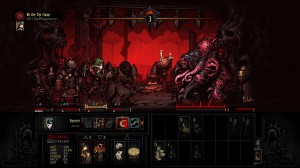Everybody likes to talk about win states and rewarding the player for playing their game, but there are very few talks on the punishment for failing or fail states. As game design has evolved over the years, so has the different ways to fail a game. For today’s post, we’re going to look at the hierarchy of fail states, and how there is more than one way for the player to feel the sting of failure.
Win or Lose:
Video games are defined by their rules, and every game has a way to win and lose; some more so than others. The fail state is what happens when the player is not able to perform the task or situation in place. Failure can be met with different degrees of punishment; going in order from light to heavy.
1: Time
No matter what the design or genre of the game, time is an always present element of failure. If you get stuck at a section or can’t beat the game, then time was lost in your pursuit of the win state. The reason why time is the lightest punishment is because as long as the player was entertained they don’t care about losing it.
Most hard games will only feature time as the punishment, as the title is hard enough without taxing the player more. When time is the only punishment, the player can quickly and effortlessly retry the section they’re stuck at with no further penalty. Well designed checkpoints are a must to make sure that the player is never forced to repeat something they already completed; speaking of which.
2: Progress
The next step up in our hierarchy is progress. The difference between time and progress in terms of punishment is that with progress’s case, the player is forced to repeat content they already did. Games like the Soulsborne series try to mitigate this by opening up shortcuts between the previous bonfire and the boss door.
Progress is when we can start to see players get frustrated with failing. Having to repeat something they already did to get back to where they were at can grow further and further annoying. This is compounded based on how far checkpoints are from each other.
One of the worst things you can do to a player is to purposely not have checkpoints between the hardest parts of a level. While fans of Kaizo games are used to it, general players don’t want to have to repeat difficult sections after they have already beaten it.
As we move up the hierarchy, it’s time to see what happens when failure actually pushes the player back.
3: Resources
For the last two sections, the player doesn’t have to do much to return to where they were at to keep playing. At the resource tier, the punishment for failure begins to reduce the player’s effectiveness.
The beauty of games that make use of checkpoints and quick save/loads is the fact that the player gets their state preserved. Any resources used are returned to them upon load; allowing for them to keep pushing forward.
When resources are lost, the player is no longer at that preserved state, but worst off than they were before. This can mean having less gold, losing experience, having to get gear repaired and so on.
The important point to understand is that the punishment starts the player off at a deficit for them to climb out of.
One of the few parts I hated about Bloodborne compared to the Souls series was the fact that you had to re-buy bullets and health vials. I felt that it was an unnecessary drain on the player’s resources in a game that was already challenging. This can lead to a lot of dead time spent recouping the resources needed to make another run at the specific event.
With that said, there is a way to make the player even worse off.
4: Power
At the fourth tier of fail states, the player actually loses power and effectiveness. This goes beyond just resources and impacts the abstraction of playing the game. One of the oldest examples of this would be MMOs that required you to get your corpse back to regain your items/power.

When the player is worse off after dying than they were before it, that can lead to a downward spiral
Recently we could use games like Let it Die or the Darkest Dungeon as examples. In both games, dying would cost the player a lot in the form of their character (or team in Darkest Dungeon.)
More importantly, after the player died, they had to spend additional time and resources to get back to the point they were at before death.
To make matters worse, if the player dies before they get back, then they will be even further in the hole. One death or failure could start a chain reaction and lead to a downward spiral for the player. This can be a killer to a player’s motivation to keep playing your game.
5: Everything
The final tier of fail states should be obvious by now: It’s the lost of everything. Typically seen in rogue-likes and “iron-man” settings in games, everything is just that: When the player dies, they are sent all the way back to start and back to zero.
There is a lot to unpack about the philosophy of iron-man modes, but that would be off topic for today. The weird part is that despite being higher in the hierarchy, everything isn’t perceived as punishing compared to the loss of power by the player.
People who play games with ironman settings know what they’re getting into; hence the allure of playing. Another point is that because these games are not set each time, starting back at zero means that they will have a different experience for the next run.
That last statement is very important, if the player is going to be starting over again, the game has to offer enough variances to make the runs feel different. This is why ironman is not often popular for linear titles.
Kick in the Gut or a Slap on the Wrist?
No matter how you design your game or its intended audience, there will be a fail state. Matching the right fail state to your design is an important part of balance. As we’ve talked about, harder gameplay is usually paired with laxer fail states to not overwhelm the player.
Depending on your design, the fail state may be an important part of the gameplay, such as in games like XCOM or the Darkest Dungeon. If you’re going to have a harsh fail state, it’s important to compensate the player somewhere in the design.
Persistent elements can work to make sure that the player is always moving forward in some fashion. Remember this: The moment the player feels like they are no longer making progress in your game is when they will consider leaving your game altogether.



